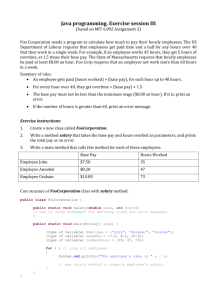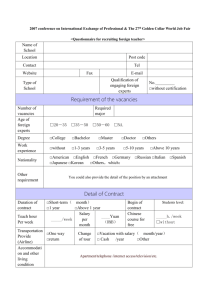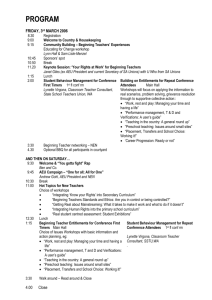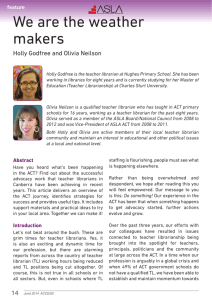information sheet - Australian Education Union (SA Branch)
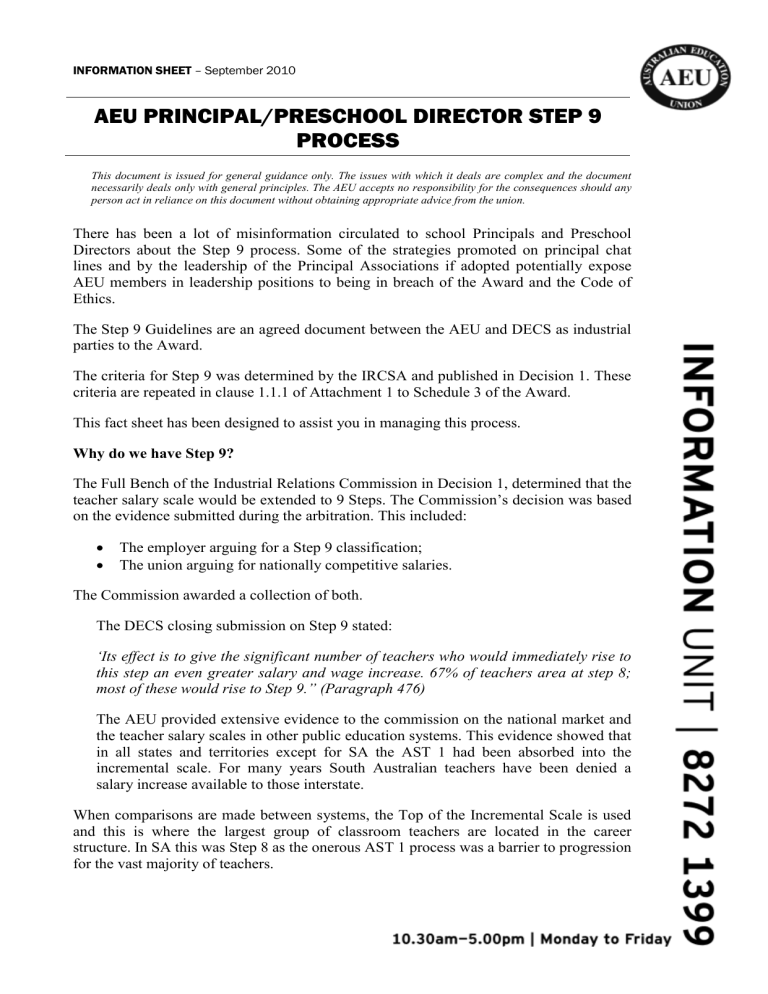
INFORMATION SHEET – September 2010
AEU PRINCIPAL/PRESCHOOL DIRECTOR STEP 9
PROCESS
This document is issued for general guidance only. The issues with which it deals are complex and the document necessarily deals only with general principles. The AEU accepts no responsibility for the consequences should any person act in reliance on this document without obtaining appropriate advice from the union.
There has been a lot of misinformation circulated to school Principals and Preschool
Directors about the Step 9 process. Some of the strategies promoted on principal chat lines and by the leadership of the Principal Associations if adopted potentially expose
AEU members in leadership positions to being in breach of the Award and the Code of
Ethics.
The Step 9 Guidelines are an agreed document between the AEU and DECS as industrial parties to the Award.
The criteria for Step 9 was determined by the IRCSA and published in Decision 1. These criteria are repeated in clause 1.1.1 of Attachment 1 to Schedule 3 of the Award.
This fact sheet has been designed to assist you in managing this process.
Why do we have Step 9?
The Full Bench of the Industrial Relations Commission in Decision 1, determined that the teacher salary scale would be extended to 9 Steps. The Commission’s decision was based on the evidence submitted during the arbitration. This included:
The employer arguing for a Step 9 classification;
The union arguing for nationally competitive salaries.
The Commission awarded a collection of both.
The DECS closing submission on Step 9 stated:
‘Its effect is to give the significant number of teachers who would immediately rise to this step an even greater salary and wage increase. 67% of teachers area at step 8; most of these would rise to Step 9.” (Paragraph 476)
The AEU provided extensive evidence to the commission on the national market and the teacher salary scales in other public education systems. This evidence showed that in all states and territories except for SA the AST 1 had been absorbed into the incremental scale. For many years South Australian teachers have been denied a salary increase available to those interstate.
When comparisons are made between systems, the Top of the Incremental Scale is used and this is where the largest group of classroom teachers are located in the career structure. In SA this was Step 8 as the onerous AST 1 process was a barrier to progression for the vast majority of teachers.
The new Step 9 introduced by the Commission required teachers to commit to professional development and mentoring. This is similar to schemes in Victoria and Queensland. In these states the majority of teachers have moved through a soft barrier to E3 in Victoria and Senior Teacher in
Queensland.
For example the uncontested evidence before the IRCSA was that in Victoria the failure to move to
E3 was ‘rare and exceptional’ and that only 5% of teachers of nine years teaching experience had not progressed.
The same is expected in SA where the majority of teachers will be reclassified by DECS to Step 9.
Why is Step 9 referred to as a soft barrier?
The Industrial Relations Commission determined:
“The modification of the scale by the introduction of a soft barrier based in the achievement of objectives will also bring SA into line with the majority of other states and territories that have integrated teacher quality considerations into progression to the top of the increment of the salary scale.”
The evidence before the Commission was that other public education systems had soft barriers in their classification system, through which the majority of teachers passed with little problem. The same should be expected in SA and we should not allow the employer to put barriers to progression in place. The IRCSA made it clear that the Step 9 will increase accessibility to a far greater percentage of teachers to higher steps.
The classification level is described as a salary step (Step 9) and once a teacher progresses then this becomes their substantive salary. This will be achieved through a soft barrier that should see the vast majority of teachers reach this salary step.
The title Step 9 should be reflective in your thinking when meeting with teachers. This classification is not Advanced Skills Teacher and the progression process and criteria are different.
The Commission did not extend the accessibility to Step 6, 7 teachers as this would have had cost implications for the employer.
The basis on which negotiations occurred was the understanding that the soft barrier meant that the majority of teachers would process to Step 9 with only those on MSU and under investigation being denied reclassification by the Department.
Yes, it is a pay increase
The Step 9 is an extension to the 8 step classification structure which delivers a pay increase to at least 65% of all teachers in return for their agreement to strive to undertake professional development or mentoring. It brings SA into line with the national teacher salaries market.
We must all understand that the Step 9 is a salary increase through a change to the classification structure.
AEU PRINCIPAL/PRESCHOOL DIRECTOR STEP 9 PROCESS –
Information Sheet
2
What is the Principal’s role?
Teachers who have completed 207 duty days at Step 8 of the incremental salary scale are eligible for progression to an additional Step 9, through the agreed process as set out in the Step 9 Teacher
Guidelines.
The Principal or their nominee is required to meet with the teacher within 14 days of a teacher submitting an application for Step 9. The workload associated with this meeting could be shared with a delegate in accordance with the Step 9 Teacher Guidelines
The meeting should focus on the scope, purpose and outcomes of the PDP as set out in Attachment
1 to Schedule 3 of the DECS Arbitrated Award 2010. The PDP is a document that looks at how the teacher proposes to improve their educational practice through professional development and the learning outcomes in the school through mentoring.
Clause 1.1.5 of Attachment 1 to Schedule 3 of the Award outlines the scope of the professional development to be undertaken.
The needs and priorities of the school and the workload of teachers must be considered in the professional development plan. It should be noted that the agreed outcomes should not increase the workload of teachers.
Once the professional development and mentoring are agreed then the form can be signed and then submitted to the department.
Who reclassifies the teacher?
It is DECS who reclassifies the teacher. The responsibility thus rests with them as the employer, not the Principal. This must be done within seven days of receipt of the documentation. The Principal is only agreeing to the PDP.
Grievance process
The Award contains grievance procedures that involve lodging a grievance with the Regional
Director, DECS or with the Industrial Commission. If the procedure for progression to Step 9 process is not followed, or the PDP is not agreed, then teachers have access to the grievance procedures in order to achieve a resolution.
Thank you to everyone who has worked through this process with their staff. If you are still concerned about the process or require any further information or support, please contact the AEU
Information Unit on 8272 1399.
AEU PRINCIPAL/PRESCHOOL DIRECTOR STEP 9 PROCESS –
Information Sheet
3





